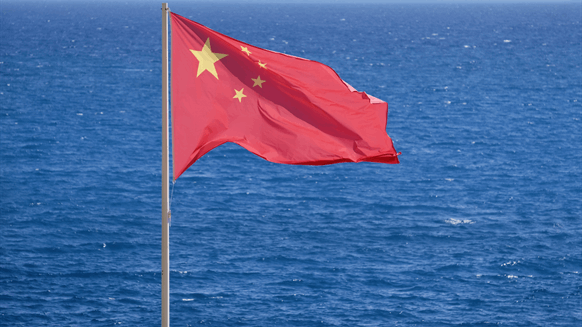CNOOC Ltd. said on Wednesday that Chinese authorities had approved the amount of proven natural gas in the Lingshui 36-1 field near disputed areas in the South China Sea, which it estimated at more than 100 billion cubic meters (3.5 trillion cubic feet).
“This is the world’s first large-scale, ultra-shallow, ultra-deepwater gas field, opening up a new exploration area in deepwaters,” the oil and gas exploration and production company said in a statement.
After tests, Lingshui 36-1 has been shown to produce over 10 million cubic meters (353.1 million cubic feet) of absolute open-flow gas per day, said CNOOC Ltd., which is majority-owned by state-owned China National Offshore Oil Corp. (CNOOC).
The field is located in the southern part of the central depression of the Qiongdongnan Basin at an average water depth of 1,500 meters (4,921.3 feet). Lingshui 36-1 is 210 meters (689 feet) deep, “making it a typical ultra-deep, ultra-shallow gas field,” CNOOC Ltd. said.
With the new reserves, the proven gas in the South China Sea has now exceeded one trillion cubic meters (35.3 trillion cubic feet), according to the company. According to CNOOC Ltd., Lingshui 36-1 is the fifth major gas field discovered in the sea, after Dongfang 1-1, Liwan 3-1, Lingshui 17-2 and Baodao 21-1. The fields span the Pearl River estuary and the Qiongdongnan and Yinggehai basins.
“The trillion cubic meter gas field in the South China Sea has now become a reality after decades of exploration,” said CNOOC Ltd.
According to the US Energy Information Administration (EIA), the Qiongdongnan Basin, where the Lingshui-36-1 field is located, lies just outside the Paracel Islands. China, Taiwan and Vietnam are fighting over the Paracel Islands.
CNOOC has been sanctioned by Washington for allegedly helping Beijing violate the sovereign rights of the South China Sea littoral states. “CNOOC has repeatedly harassed and threatened offshore oil and gas exploration and production in the South China Sea, with the aim of increasing political risk for interested foreign partners, including Vietnam,” the Commerce Department said in a statement on January 14, 2021, announcing CNOOC’s addition to its Entity List. The list imposes additional trade requirements.
In a statement on Wednesday, Zhou Xinhuai, CEO and president of CNOOC Ltd., said: “The newly discovered ultra-deep and shallow gas field is an important part of the trillion cubic meter gas region in the South China Sea.”
“The completion of the trillion cubic meter gas region embodies the tremendous achievements that CNOOC Limited has made in the South China Sea over the past 40 years,” Zhou added.
“We have now embarked on a new journey to further expand the company’s resource base. CNOOC Limited is committed to providing society with stable clean energy and contributing to the low-carbon development of the economy.”
The discovery of Lingshui 36-1 was announced on June 7, 2024. The company declared a technical breakthrough in hydrocarbon exploration. The main gas-bearing reservoir is the Quaternary Ledong Formation.
“Exploring the ultra-deep and shallow gas fields in the South China Sea presents world-class engineering and technical challenges,” said Xu Changgui, then deputy head of exploration and now chief geologist at CNOOC Ltd., at the time.
“The successful test of Lingshui 36-1 is a breakthrough for exploration in such reservoirs,” said Xu. “The company will continue to face the challenges of exploring and developing resources in such reservoirs to advance the utilization of deepwater natural gas.”
This is the second discovery in the South China Sea announced by CNOOC Ltd. this year.
In March last year, the company announced that it had made a “major” discovery in the Kaiping South oil field, which lies in the deep waters of the eastern South China Sea. The field has an average water depth of about 500 meters, according to the company.
The discovery well, KP18-1-1d, was drilled to a total depth of 3,462 meters (11,358.3 feet) and encountered 100.6 meters (330.1 feet) of oil and gas producing areas. The discovery added over 100 million tonnes of oil equivalent to proven reserves and is the first deepwater oil field in the East Asian country to cross the 100 million tonne mark in reserves, according to CNOOC Ltd.
“The main oil-bearing reservoirs are the Zhuhai Formation, Enping Formation and Wenchang Formation of the Paleogene, and the oil reservoir is light crude oil,” CNOOC Ltd. said in a press release on March 8, 2024.
“The well has been tested and is expected to produce an average of approximately 7,680 barrels of crude oil and 0.52 million cubic feet of natural gas per day,” it said. “Through continued exploration, the proven volume of the Kaiping South Oilfield has reached 102 million tons of oil equivalent.”
To contact the author, send an email to [email protected]

